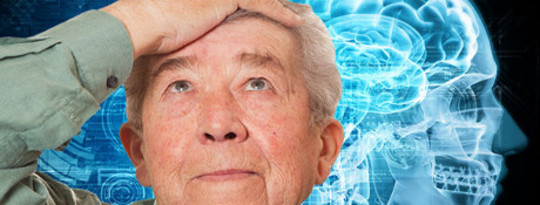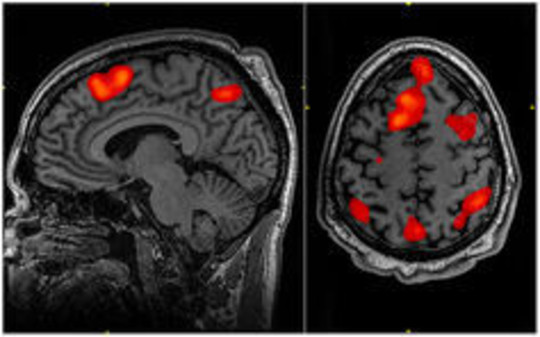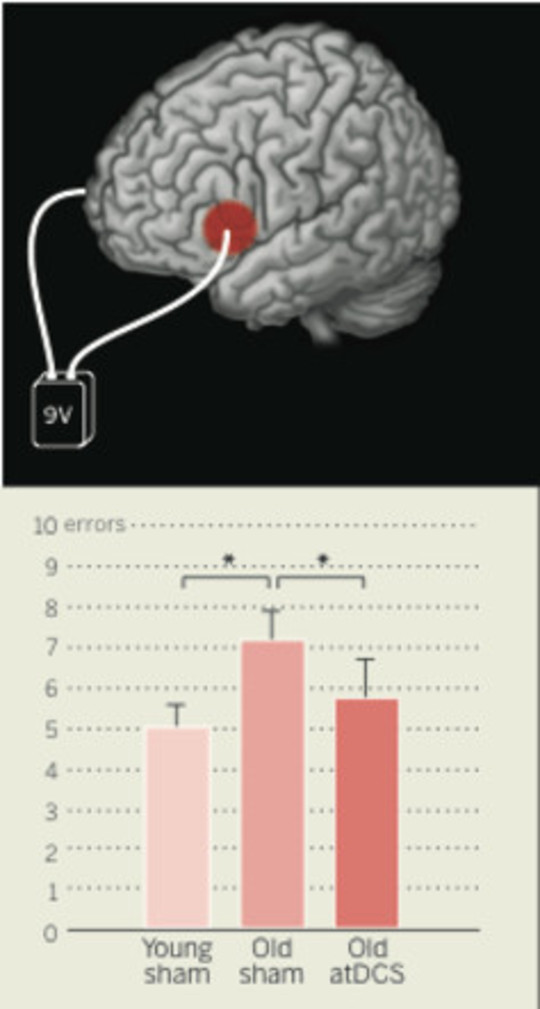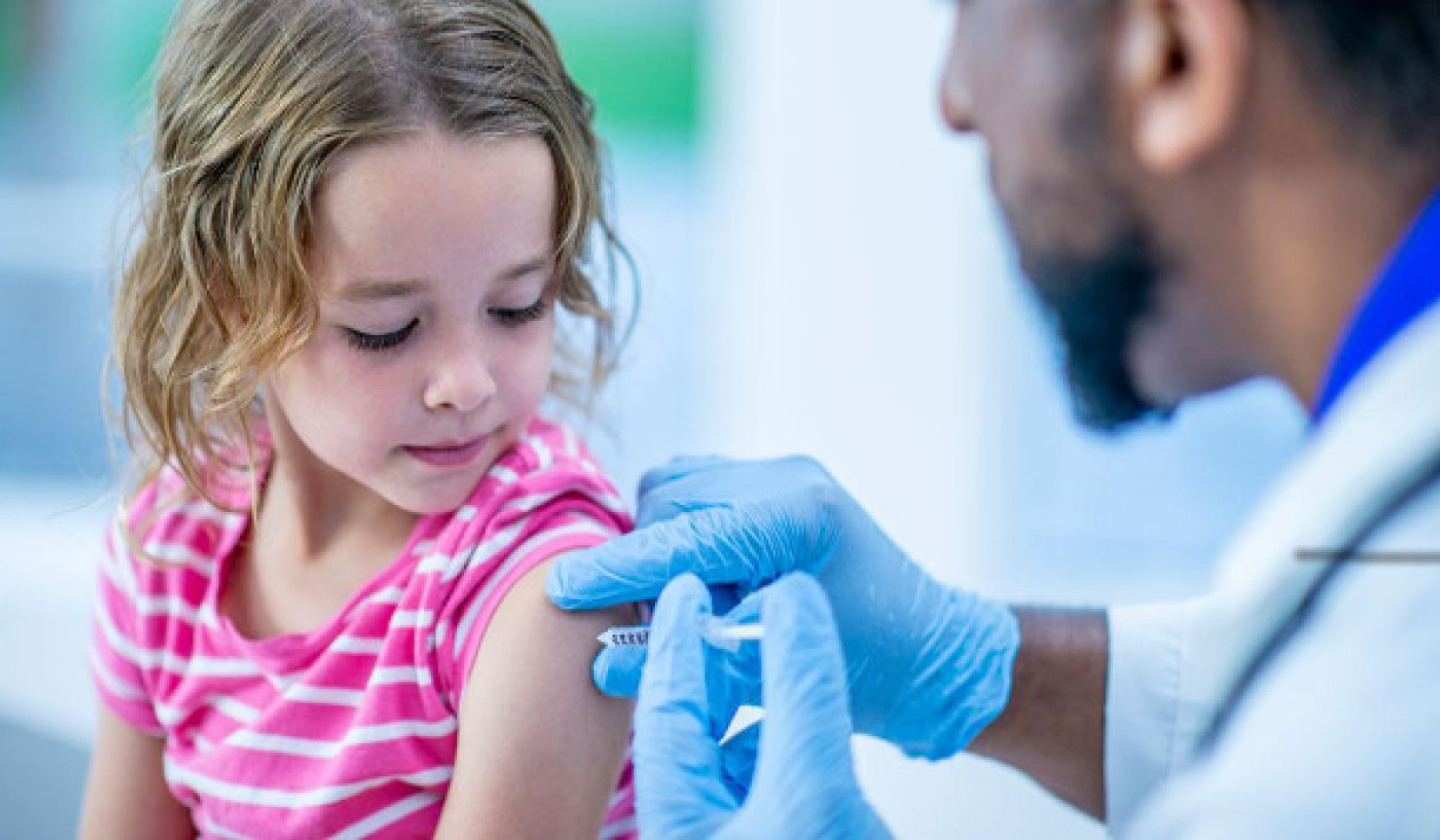
For years, conventional wisdom held that growing older tends to be bad news for brains. Past behavioral data largely pointed to loss in cognitive – that is, thinking – abilities with age, including poorer memory and greater distractibility. Physical measures of brain structure also showed atrophy, or loss of volume, in many regions with age.
Watching Older Brains At Work
Enter cognitive neuroscience, a subfield of psychology that incorporates methods from neuroscience. It uses measures of brain activity to understand human thought. The emphasis is on how the brain shapes behavior, asking questions like which brain regions help us form accurate memories or what area controls face perception.
Using cognitive neuroscience methods to study aging has unexpectedly revealed that, contrary to previous thought, aging brains remain somewhat malleable and plastic. Plasticity refers to the ability to flexibly recruit different areas of the brain to do different jobs. In contrast to the earlier, largely pessimistic view of aging, neuroimaging studies suggest aging brains can reorganize and change, and not necessarily for the worse.
 fMRI scan shows areas of brain more active than others. John Graner, Walter Reed National Military Medical CenterResearchers investigate which parts of the brain are engaged during different tasks using methods such as functional magnetic resonance imaging, which measures blood flow to various areas of the brain while active. By tracking what happens inside the brain during particular activities, neuroimaging data reveal patterns of change with age. For instance, older adults sometimes use a region in both the left and right hemispheres of their brains to perform certain tasks, while young adults engage the region in only one half of the brain. Older adults also appear to activate more anterior regions of the brain whereas young adults exhibit more posterior activation.
fMRI scan shows areas of brain more active than others. John Graner, Walter Reed National Military Medical CenterResearchers investigate which parts of the brain are engaged during different tasks using methods such as functional magnetic resonance imaging, which measures blood flow to various areas of the brain while active. By tracking what happens inside the brain during particular activities, neuroimaging data reveal patterns of change with age. For instance, older adults sometimes use a region in both the left and right hemispheres of their brains to perform certain tasks, while young adults engage the region in only one half of the brain. Older adults also appear to activate more anterior regions of the brain whereas young adults exhibit more posterior activation.
The emergence of the cognitive neuroscience of aging occurred alongside advances in the understanding of neurogenesis; neuroscientists discovered that the growth of new neurons could continue throughout life, not just when we are very young. It is still unknown to what extent new neurons contribute to behavioral and brain changes with age. But there is some evidence in rodents that new learning and enriched, stimulating environments increase survival of new neurons potentially allowing the new neurons to contribute to abilities and even improve health.
External Stimulation
One exciting new direction for research on the aging brain uses neurostimulation to temporarily activate or suppress distinct neural regions. With transcranial magnetic stimulation, a coil is held over a participant’s head. Participants may be able to feel some stimulation on the scalp when the coil is turned on. Transcranial direct current stimulation is an even more surprising technique, with current administered from a 9V battery. These methods are non-invasive, simply involving holding a device over a person’s head or attaching electrodes to the scalp, and are quite safe when operated within guidelines.
They allow us, for the first time, to manipulate brain activity in a healthy, functioning person. Other neuroscience methods allow neurons to be turned on or turned off using pharmacological, genetic, or other methods, but such manipulations can’t ethically be applied to humans. While neuroimaging methods allow us to view which brain regions are active while performing cognitive tasks, we haven’t been able to test whether those brain regions cause, or are critical for, those tasks.
 Shocking results! Older subjects did almost as well as young ones when their brains were direct current stimulated. Science/AAAS, Author providedThe ability to manipulate brain regions – temporarily and safely – allows for new types of tests that couldn’t be done before. For example, stimulating the frontal cortex – the brain region behind the forehead – can decrease errors on cognitive tests. When older adults in one study were asked to give examples of items that fit into different categories, they made mistakes under time pressure. Administering transcranial direct current stimulation decreased the number of errors committed by older adults, bringing them close to the level of performance of younger adults.
Shocking results! Older subjects did almost as well as young ones when their brains were direct current stimulated. Science/AAAS, Author providedThe ability to manipulate brain regions – temporarily and safely – allows for new types of tests that couldn’t be done before. For example, stimulating the frontal cortex – the brain region behind the forehead – can decrease errors on cognitive tests. When older adults in one study were asked to give examples of items that fit into different categories, they made mistakes under time pressure. Administering transcranial direct current stimulation decreased the number of errors committed by older adults, bringing them close to the level of performance of younger adults.
Neurostimulation offers much promise to further understanding of how the brain works in aging people, but there are many limitations. The spatial area affected by neurostimulation is not very precise as the scientist passes the coil over the subject’s head. Many regions cannot be targeted because they’re located deep within the brain, particularly problematic for studying memory. And activating some regions can cause discomfort for participants, such as twitching induced in the area of the forehead.
It’s Not All Downhill
Much of our understanding of aging brains has thus far focused on declining cognitive abilities. But there is some evidence that social and emotional abilities are relatively well-preserved with age. Older adults seem to be just as good at forming impressions of others and are even better at regulating or controlling their emotions than younger adults.
This suggests that brain regions underlying these abilities may not exhibit the same downward trajectory with age as those associated with cognitive abilities; these brain areas may show different patterns of reorganization and change.
Should these abilities be better preserved with age, they could be harnessed to develop effective memory strategies. For instance, emphasizing the motivational, personal and emotional significance of information to be remembered could help older people’s memories. Much research remains to be done on these questions.
Brain Workouts
Older brains' plasticity suggests they could benefit from training programs and engaging, immersive experiences such as learning new skills like quilting or digital photography. Such a finding would have profound implications for the large population of active seniors who wish to stave off age-related cognitive decline.
While research is flourishing on a number of potential programs that could positively affect brain health – including physical exercise, cognitive regimens and engaged, social lifestyles – caution is warranted. For example, researchers warn there is little scientific evidence of the effectiveness of brain training software – so-called brain games – to date.
The aging brain has proven to be much more dynamic than early research would have suggested. Advances in research methods and widening the range of questions under investigation will further enhance our understanding of how the brain changes and adapts across the lifespan. With luck, this knowledge will reveal ways to harness plasticity to better support cognition as we age.
This article was originally published on The Conversation
Read the original article.
About the Author
 Angela Gutchess is an Associate Professor of Psychology at Brandeis University. Research in her laboratory explores the effects of age and culture on memory and social processes using functional magnetic resonance imaging (fMRI) and behavioral measures.
Angela Gutchess is an Associate Professor of Psychology at Brandeis University. Research in her laboratory explores the effects of age and culture on memory and social processes using functional magnetic resonance imaging (fMRI) and behavioral measures.
Disclosure Statement: Angela Gutchess has current funding from NSF and the Alzheimer's Association. Past funding was received from NIH and AFAR.
Recommended book:
Balance Your Hormones, Balance Your Life:
Achieving Optimal Health and Wellness through Ayurveda, Chinese Medicine, and Western Science
by Claudia Welch.
 In clear, accessible language, internationally renowned doctor Claudia Welch explains hormones from A to Z, specifically how they relate to each other, how and why they become imbalanced. She includes simple diet tips, stress-management techniques, and natural sleep secrets. Using the principles of Ayurveda (popularized in the West by Deepak Chopra) and the holistic sensibility of Dr. Christiane Northrup, Balance Your Hormones, Balance Your Life gives women the essential tools to achieve the perfect balance between their yin (sex hormones) and yang (stress hormones), and between the body and the mind.
In clear, accessible language, internationally renowned doctor Claudia Welch explains hormones from A to Z, specifically how they relate to each other, how and why they become imbalanced. She includes simple diet tips, stress-management techniques, and natural sleep secrets. Using the principles of Ayurveda (popularized in the West by Deepak Chopra) and the holistic sensibility of Dr. Christiane Northrup, Balance Your Hormones, Balance Your Life gives women the essential tools to achieve the perfect balance between their yin (sex hormones) and yang (stress hormones), and between the body and the mind.
Click here for more info and/or to order this book on Amazon.
























